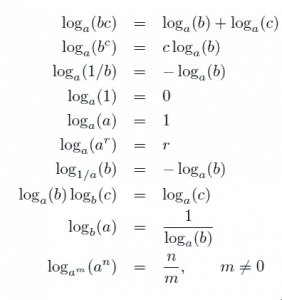Logarithms tend to scare many students who take the ACT, but they’re actually not as bad as they might first appear!
Logs are basically just the opposite of exponents. The standard format for an exponent expressions looks like this:
a = bc
A logarithm that expresses that same relationship looks like this:
logb(a) = c
For example, 42 = 16 is saying the same thing as log4(16) = 2.
When reading this log aloud, we’d say, “Log-base 4 of 16 equals 2.”
Try to move between exponents and logs in these practice questions!
104 = 10,000
Log9(81) = 2
62 = 36
ANSWERS: log10(10,000) = 4, 92 = 81, log6(36) = 2
Now solve a few logarithms for the missing info:
Log7(49) = ?
Logx(25) = 2
Log2(x) = 4
ANSWERS: 2, 5, 16
Logs should pose no problem for you if you know your exponent rules! Here’s a complete chart of log rules, but for the ACT, you’re likely fine knowing just the basics.
* * *
For more ACT prep tips, don’t forget to sign up for our mailing list! We’ve got all sorts of freebies and advice to share with you. Questions about the ACT, SAT, or the college application process in general? Contact us today.

